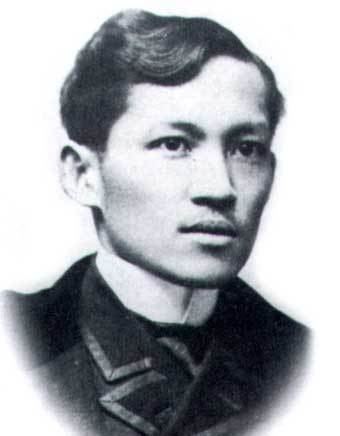 | ||
The Rizalista religious movements refers to the new religious movement adopted by a number of ethnic religious groups in the Philippines that believe in the divinity of Jose Rizal, the Philippines' de facto national hero. Many of these sects or religious movements believe that Rizal is still living and that he will deliver his followers from oppression and poverty. Rizalist groups have differing views on the divinity of Jose Rizal. Some believe that he is God himself, some believe that Rizal was the second son of God, the reincarnation of Christ. Some of these groups also identify Rizal as the god of the pre-Spanish Malay religion. Some only see as Rizal as a spiritual guide. Leaders of the sect often claim that key people in the Philippine Revolution including Rizal himself were reincarnation of the Virgin Mary. Many of these groups claim that the only key to salvation is by joining their group.
Contents
The Rizalist religious movement ranged from colorums which were prevalent during the 1920s up to the 1930s to Philippine Benevolent Missionary Association, which was led by Ruben Ecleo. Among these movements are the Iglesia Sagarada Familia (lit. Church of the Holy Family), Lipi ni Rizal (lit. Clan of Rizal), Pilipinas Watawat (lit. Philippine Flag), the Molo, and the Iglesia ng Watawat ng Lahi (lit. Church of the Race's Flag).
Iglesia ng Watawat ng Lahi
The Iglesia ng Watawat ng Lahi is the considered as the original Rizalist group. The sect was established on December 25, 1936. Rev. Fr. Luis Fabrigar and Jose Valincunoza was the sect's first Supreme Bishop and president respectively.
The sect's headquarters is located in Calamba, Laguna and has established 100 chapters throughout the Philippines. In the 1980s, the number of Rizalista converts was about 100,000 the highest amount in sect's history. As of 2012, the sect's membership was reduced by at least 90 percent. The sect is currently led by Bonifacio Relleta.
Beliefs and practices
The Iglesia ng Watawat ng Lahi requires aspiring priest to study in an institution somewhere in Bicol. Their priests are also allowed to marry after they have served the church for at least five years. Sect officials are not paid and are supported by donations by the sect's financially able members.
Alongside the Bible, they also have the Sugong Kayumanggi (lit. The Brown Messenger), the second most important book for the sect. Rizal's two novels, Noli Me Tangere and El Filibusterismo is considered by some as the sect's counterpart of the Bible of the Catholics by some eleders. They also have only three commandments as opposed to the ten by the Catholic Church. The Rizalistas are taught to love God, people and society. Recently love for the environment were added to their teachings.
The birth and death anniversary of Rizal are considered one of the most important holiday for the sect. During these days the sect celebrates Misa de Tres an elaborate celebration of flowers, flags and parades. Gomburza Day, Bonifacio Day and other national holidays are also important holidays for the sect. The sect also celebrates Christmas every October 3, the date they consider as the true birthday of Jesus Christ.
During many religious celebrations, sect members often wear clothing with the colors of the Philippine flag.
The Iglesia ng Watawat ng Lahi believes that Rizal is the incarnation of Holy Spirit. They believed that Rizal was never truly killed during his execution in Bagumbayan. The point out that when Rizal's body was about to be exhumed in Paco Park, Rizal was nowhere to be found and that a tree trunk and a pair of shoes was found at the site. They believed that Rizal is still living in Mount Makiling.
The sects has its version on the account of Jose Rizal's life. Jose Rizal as a baby was found by Francisco Mercado and Teodora Alonzo, who were recorded by documented historical accounts as his biological parents. The couple wanted to baptize Rizal as Jove Rex Al, but the name was turned down due to it being close to Christ's name by the officiating Catholic priest. The baby was then baptized as Jose Rizal. The first preachers of the sect were referred to as the Banal na Tinig (lit. Holy Sound). They are believed to be able to communicate with Rizal, who lived in Makiling.
